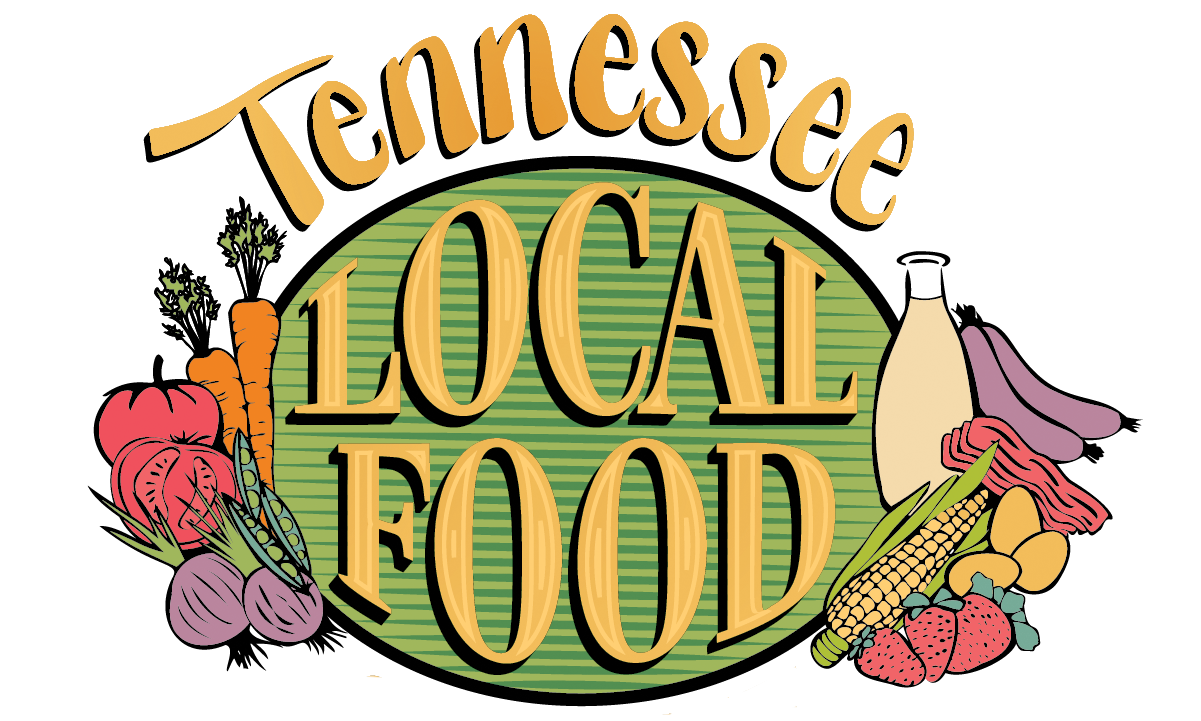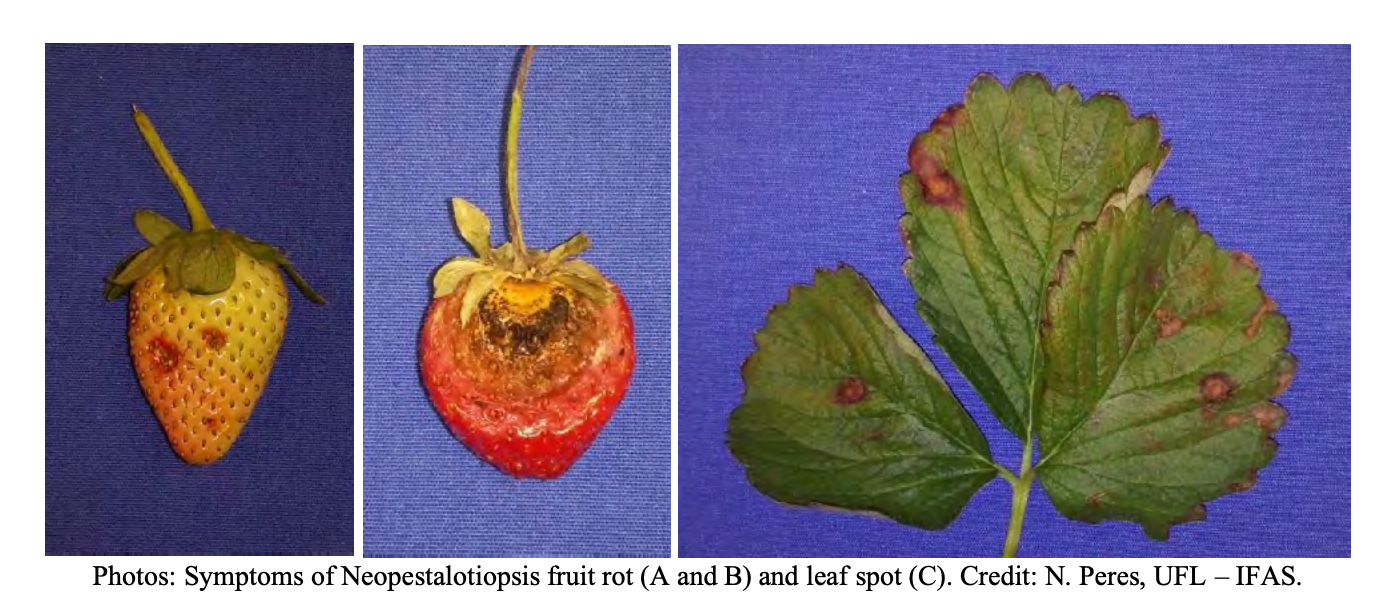Neopestalotiopsis in Strawberry Plants
Within the past few weeks, many Tennessee strawberry growers have received notice from plant suppliers regarding potential disease problems in their plants. This notice comes at the worst possible time since growers have long since ordered plants and many paid deposits on them. They have been preparing land for the new plantings – often including fumigation, constructing raised beds and laying plastic on them, and getting irrigation systems ready for use at the time of planting. Depending on location, planting for plasticulture systems is done from mid-September through mid-October.
Pictures of Neopestalotiopsis symptoms may be found in 2024 Strawberry IPM Guide
In some cases, plant suppliers have canceled orders and offered refunds on deposits or given growers to option to “take a chance” and purchase plants if they will pay the entire cost upfront and sign a waiver absolving the supplier from any liability related to the plants. To understand the magnitude of this problem, it is important to realize that most strawberry plants being set in the Southeast originate as runner tips from plantings in Prince Edward Island, Canada. Local nurseries purchase these tips and root them for sale to strawberry fruit producers. Neopestalotiopsis disease has been found in plants on Prince Edward Island and has been disseminated to nurseries.
Growers are facing three options:
Do not plant strawberries for the 2025 growing season. This will eliminate the risk of getting bad plants and the high cost of planting and maintaining an intense spray program which may, or may not, be effective in controlling the disease.
Take a chance and purchase plants from eastern sources. This may involve paying for the plants in advance and signing the waiver that would relieve nurseries from disease issues with their stock. It will also involve culling out any suspect plants as they show up (plants may be asymptomatic initially and then develop symptoms over time), along with initiating an intense spray program beginning the day of planting. Sprays are preventive, not curative. Fungicide applications should begin at the time of planting and continue at weekly intervals until plants are dormant, and resume once plants become active in spring.
Try to find alternate plant sources. At this stage of the game, all east coast plant sources should be suspect. So far, Neopestalotiopsis has not been found in west coast nurseries. However, they may not have any plants to sell, their varieties may not be what is needed, or they may not be able to ship plants until after the desired time frame for planting.
Dr. Mark Hoffman, North Carolina State University, suggests the following for growers who decide to plant:
It is essential to start with plants that show no disease symptoms. Note: Although susceptibility may vary some among varieties, none of them are resistant.
Have spray equipment capable of attaining good coverage on all parts of the plant.
Start an aggressive spray program beginning with the day of planting. Control is based on prevention. There are no curative options.
When using plug plants and tips, use only plant material that is symptomless. Closely inspect plants and discard all that are suspect.
If using bare-root plants and cut-offs:
Green bare-root plants need to be watered every day for the first 14 days after planting.
Cut-offs require considerably less overhead watering which could reduce disease pressure.
Late planting (after the initial rooting phase):
Use row covers (ideally before Thanksgiving) to increase crown development.
Thiram is considered to be one of the better fungicides for control of this disease. The following information has been suggested for its use:
Consider spraying the maximum number of applications of Thiram allowed by the label (every 10 to 14 days and optimally ahead of rain events) starting immediately after transplanting, continuing until cold winter weather sets in, and continuing in spring.
In addition, tank mix and/or alternate the following fungicides with Thiram for the maximum number of applications allowable –
Switch (five applications a 11 oz./acre)
Rhyme or Inspire (both are DMI fungicides) – four applications
Tilt and other generics containing propiconazole should be limited to three or fewer applications, as stunting and yield reduction have been reported with this fungicide.
This will give a total of 12 Thiram applications, with nine of them including a mixture of a contact material (Thiram) and a systemic material (Switch or DMI fungicides)
These combinations should provide the best control of Neopestalotiopsis available, while also providing control of Botrytis and powdery mildew.
Please contact me if I may be of any further help in this matter.
Best Regards and Have a Great Weekend!
Dave Lockwood
Plant Sciences

